On the sidelines of the LX Venice Biennale, Le Stanze del Vetro dedicate a historical exhibition to the presence of Murano glass in the Giardini Pavilion between 1912 and 1930. The exhibition is a rare opportunity to admire extraordinary masterpieces sandwiched between two extremely significant chronological terms: the first edition in which glass is employed to all intents and purposes as one of the materials of contemporary artistic experimentation-and not only presented within the decorative arts section-and the year preceding the birth of the Venice Pavilion, that is, the creation of a building consecrated to industrial-craft production in the area.
The relationship between art with a capital “A” and applied art has been as controversial in Venice as ever since the first edition: for if on the one hand the 1895 Biennale inaugurated by banishing the “minor” arts from its enclosure, on the other it brought to the city a cultured and refined public that could easily reach theEsposizione di scelti vetri artistici set up at Palazzo Giustinian in Murano, where the Barovier Artists presented a crystal glass blown stem cup with a tortile stem, whose spectacular essentiality marked an epochal transition from a revival taste to modernity. It is precisely on this stylistic-formal node that the exhibition at the Glass Rooms opens, inviting visitors to literally immerse themselves in a didactic corridor that
which, through archival photos and videos, restores the flavor of an era, that is, the cultural and social climate of the Venice that, not without contradictions, was giving life to the first Biennales where objects of disruptive force such as Hans Stoltenberg Lerche’s extraordinary glass pieces make their appearance, which, as Marino Barovier curator of the exhibition says, are "anything but Murano.
Rather, they respond to a more French taste, and already Art Nouveau, the splendid plates and vases inspired by the zoomorphic world that the German artist created with the Toso Brothers in open antithesis to the dominant historicist language and which, in the same 1912 Biennale, at the same time sanctioned the triumph of the Chalice of the Bell Tower, or rather a celebratory glass of traditional form and decorated with enamel. A decoration that was due to an equally talented artist, Vittorio Toso Borella, son of the famous Francesco, who had already been noted for some objects in the “floral style” at the 1909 Ca’ Pesaro exhibition the same ones that are plausibly preserved today at the Murano Glass Museum. Indeed, it should be remembered how the environment of the Capesarina secession was for years the site of the Venetian artistic avant-garde, where Teodoro Wolf-Ferrari and Vittorio Zecchin also presented some unpublished polychrome tesserae and murrine works that later won over the public at the 1914 Biennale, the reason for a room dedicated to them.

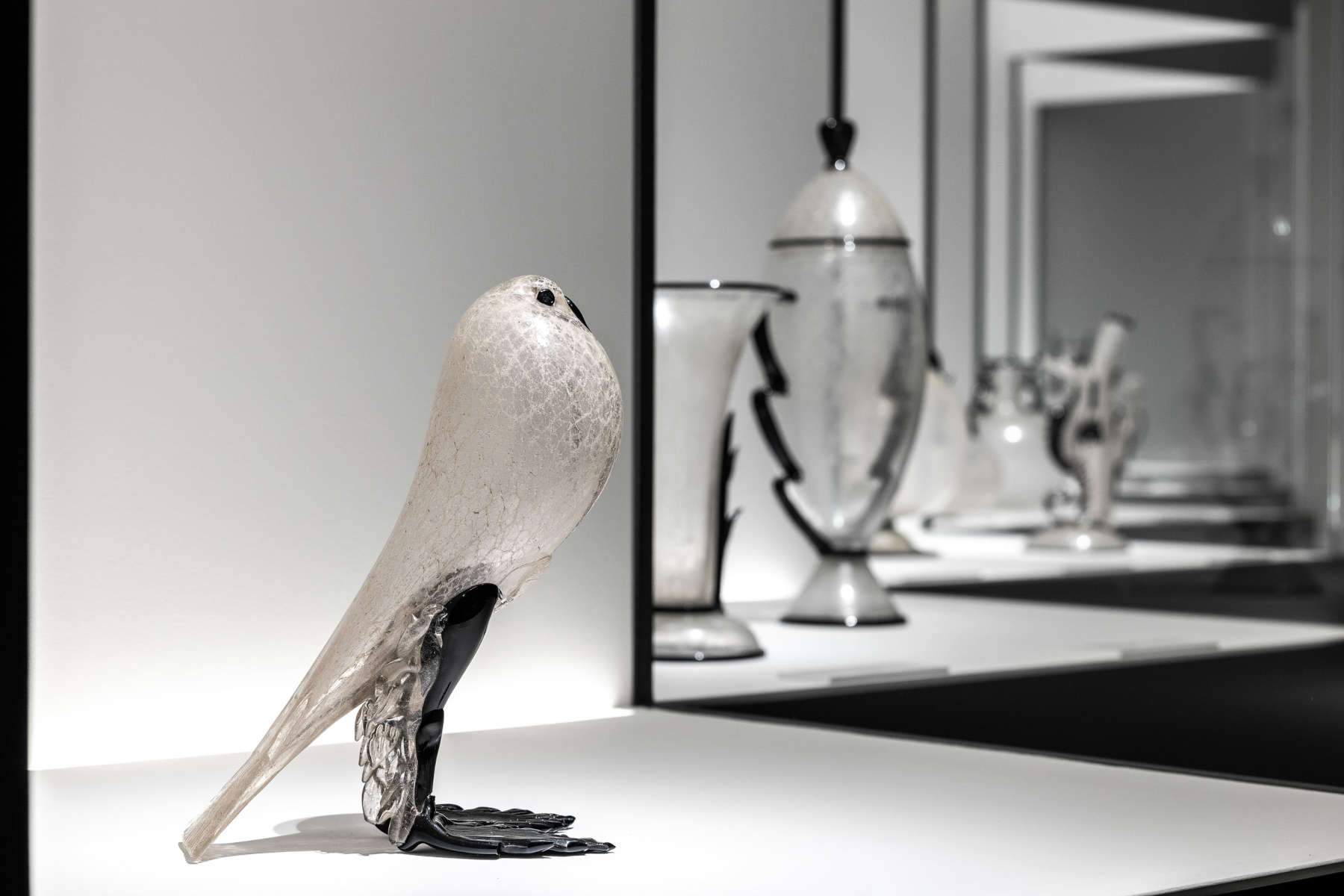
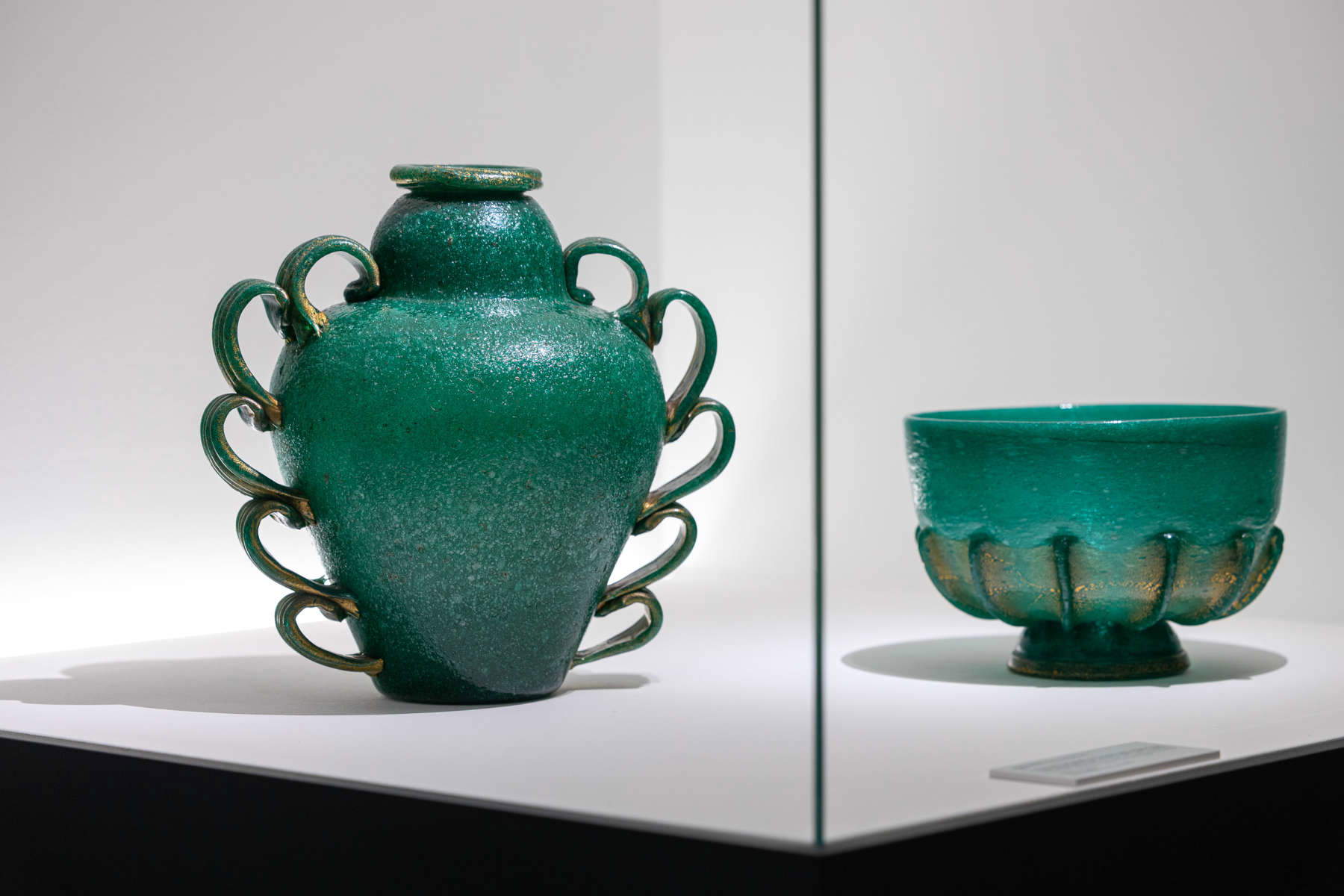


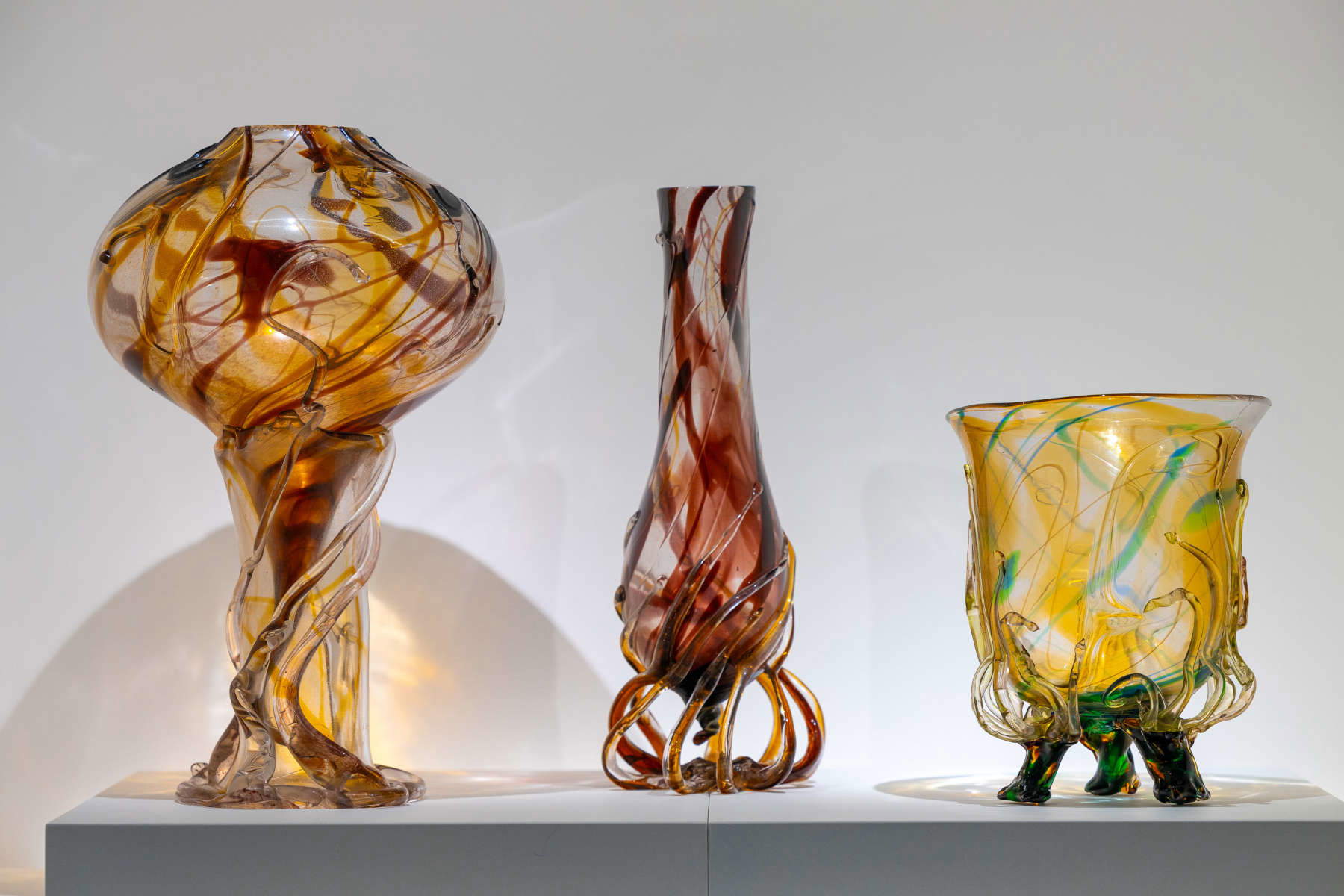

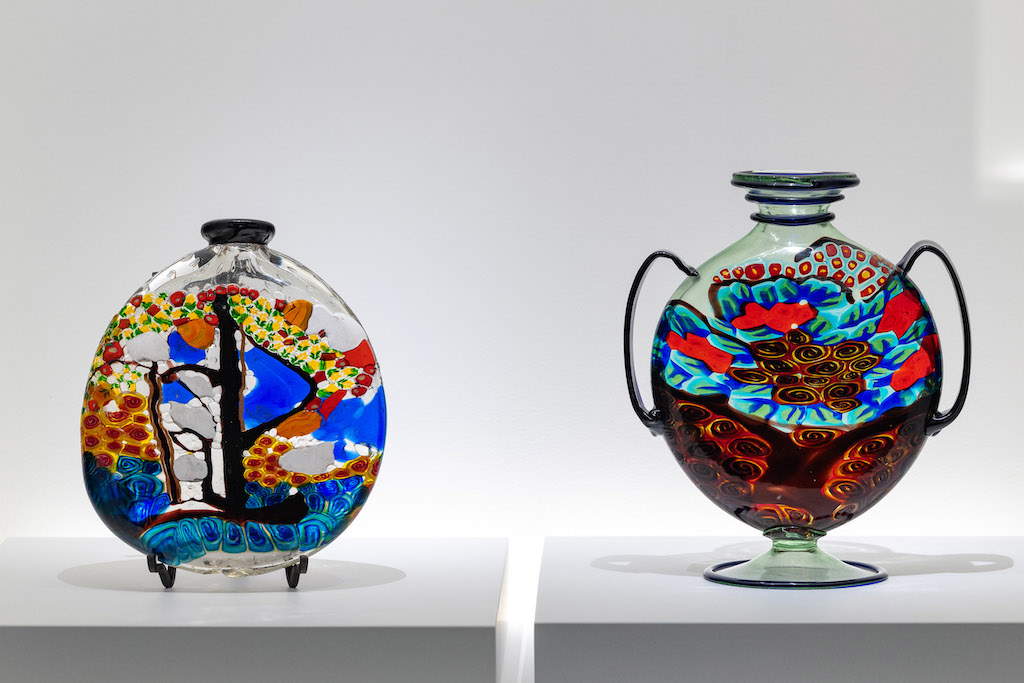
Through 135 works, therefore, the exhibition traces eight editions of the Biennale - from the 10th to the 17th - in years of marked evolution, both in the style of the objects and in the mechanisms of the market, inevitably marked by socio-political events, first and foremost the Great War. From the profound wartime fracture the production line fragmented into an offer as varied as ever, and at times distant, as the Biennials of the 1920s well testify, the scene of the great revolution implemented by Giacomo Cappellin and Paolo Venini but also of the unique pieces of Umberto Bellotto. It is the Murano of the memorable series of very light blown objects of indefinable hues by V.S.M. Cappellin Venini e C. but also of the connubi between glass and wrought iron born of the collaboration between Bellotto, a sculptor as adept as ever at forging metals, and Vetreria Artistica Barovier: these are polychrome glass and murrine vases, with obvious pictorial references, “caged” in a wrought iron structure that fixes and supports them. The result is an object that is, by its very nature, unrepeatable; unique pieces that for years have been collected by a few enthusiasts in the world-mostly lenders to this exhibition-and that now, precisely because of their uniqueness, reach record figures at auction.
A few years later, another sculptor lent to glass, Napoleone Martinuzzi, invented the pulegoso, a glass that imprisons in its own thickness a nebula of bubbles and that, by eluding the transparency of the material, accentuates its sculptural potential. Martinuzzi presented his discovery precisely at the Biennale, the 1928 Biennale, which the exhibition reconstructs thanks to an immersive installation that includes archival material.
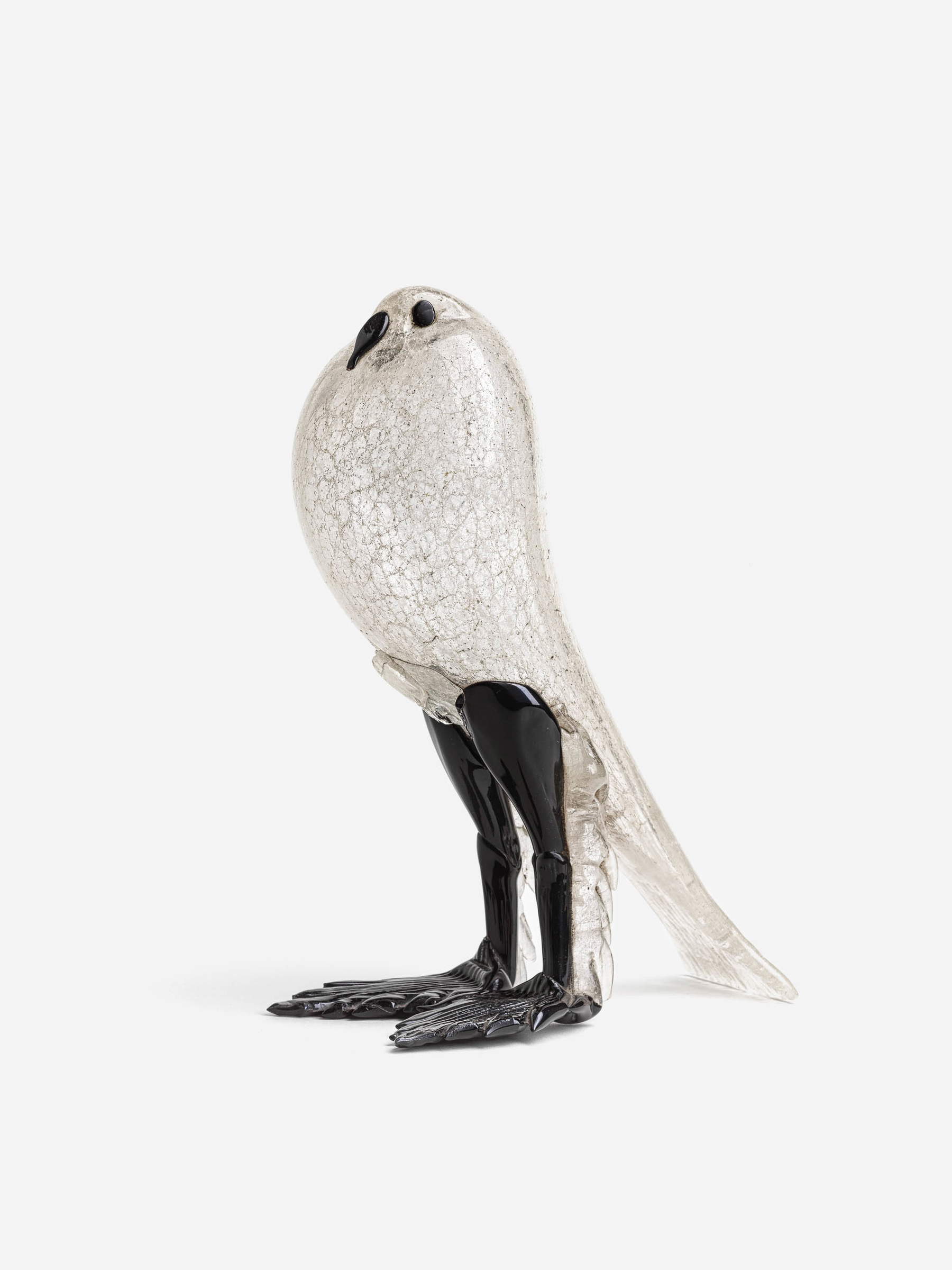

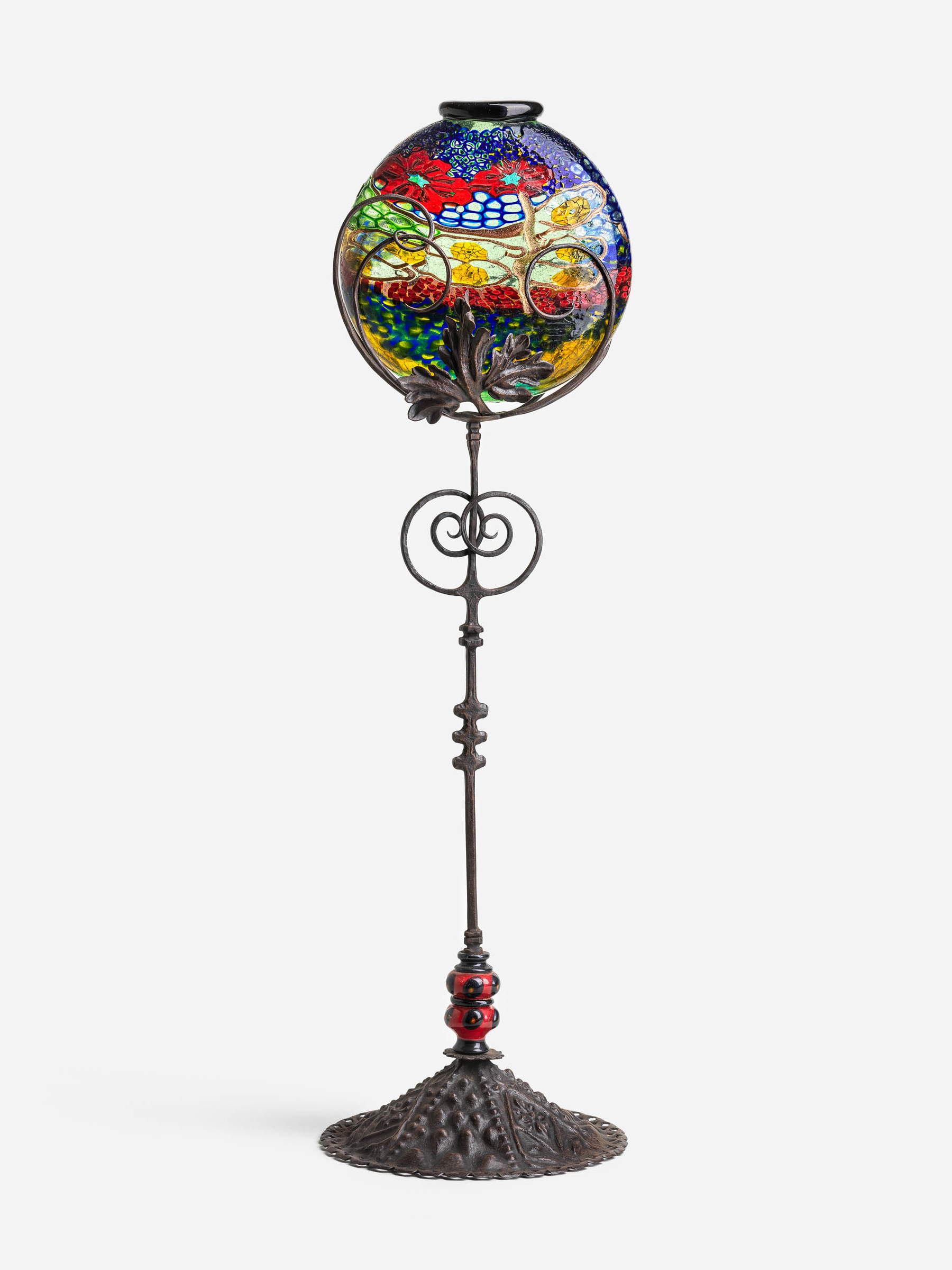
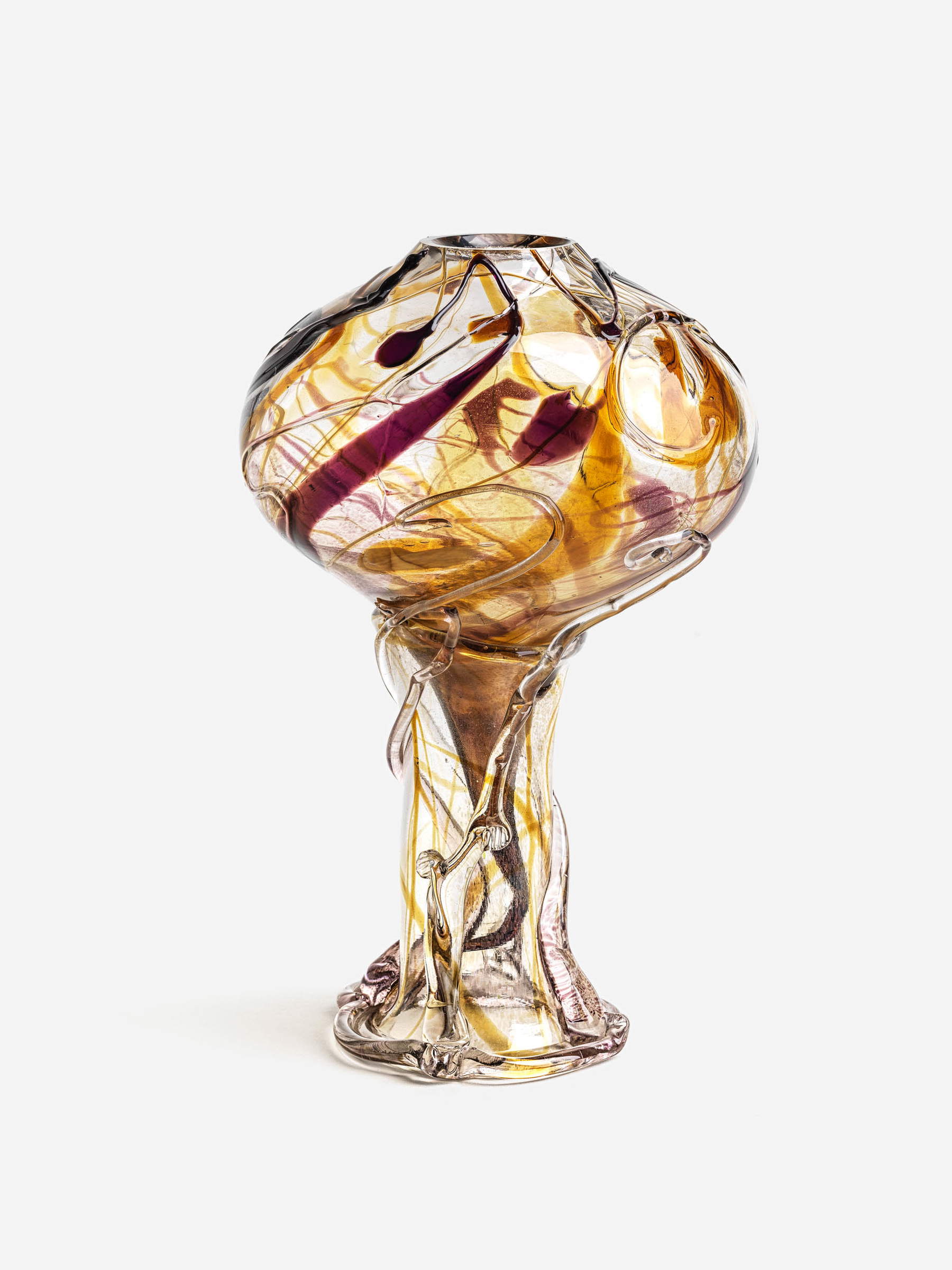
Two years later Ercole Barovier brought to the Biennale the Primavera series, or objects that, both for their shape and for the combination of semi-transparent glass with a craquelé effect with a polychrome border, sanctioned the advent of Deco in Murano. Although they are as rare as ever-because they originated from an error due to a failed supply and therefore unrepeatable-this exhibition exceptionally aligns fourteen examples.
As usual, the catalog marks a moment of important scientific insight. The volume, very rich in archival materials, opens with an essay by Marino Barovier on the cut of an exhibition born from the evolution of two previous episodes: the exhibition celebrating the centenary of the Biennale, in 1995, and Vittorio Zecchin’s solo show held at the Museo Correr in 2002.
The choice of such a limited chronological span (1912-1930) and the advancement of studies in general on the applied arts allowed for lunges - dutiful - to two key figures: Hans Stoltenberg Lerche and Guido Balsamo Stella, delved into by Carla Sonego and Stefania Cretella, respectively.
Warning: the translation into English of the original Italian article was created using automatic tools. We undertake to review all articles, but we do not guarantee the total absence of inaccuracies in the translation due to the program. You can find the original by clicking on the ITA button. If you find any mistake,please contact us.